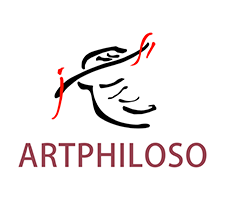"After Matisse, only Chagall truly understood color."
—Pablo Picasso’s words capture the legendary status of this Jewish artistic genius.
In February 2025, California’s Clars Auction House drew global collectors with two Chagall works on paper (Winter: Christmas Parade-Four Seasons and Sunday), estimated at $300,000–500,000 (≈¥2.2–3.6 million). Months later, his oil painting Bouquet with Fruit (1949) sold for £730,800 (≈¥6.64 million) in London. How did this war-torn exile conquer the art world with dreamlike hues?

A Life Adrift: The Color Poet from a Jewish Village
Marc Chagall (1887–1985) was born into poverty in Vitebsk, Belarus. His childhood—wooden huts, goats, violins, and Jewish rituals—became his visual "nostalgia code."
• Three Cultural Influences:
o Jewish tradition: Torah scrolls, embroidered patterns
o Russian folklore: Fairy-tale villages and animals
o Western modernism: Fauvist colors and Cubist structures absorbed in Paris
At 26, he moved to Paris’s artist colony "La Ruche," transforming gloomy Russian palettes into cobalt blues, vermilions, and golds—creating "poetic Cubism."
Artistic Struggles: Defending Dreams Amid War
Chagall survived two world wars, American exile, and his wife Bella’s early death, yet used art as his shield:
• Identity Crisis:
Persecuted by Nazis for his Jewish roots, his 1938 White Crucifixion (called a "symbol of hope" by Pope Francis) headlines Rome’s 2025 Jubilee Exhibition.
• Style Criticism:
Surrealists dismissed his work as "not subconscious enough." He retorted: "I paint reality!"
• Political Battles:
Resigned as Soviet Vitebsk Art Commissioner after clashes with Malevich’s faction.
"Even in Paris, Russian soil clings to my shoes." This confession defines his cultural roots.

Market Spotlight: Why Collectors Compete for His Work
Chagall’s soaring prices stem from his unique "emotional surrealism":
1. Love as Icon:
Wife Bella is his eternal muse. The Birthday (1915), featuring their floating embrace, remains art history’s ultimate love declaration.
2. Color Alchemy:
Blends Jewish ornamentation, Russian folk tones, and French romance—like the crimson goat against Sunday’s blue backdrop (1939).
3. Global Resonance:
Dallas Museum’s 2025 "Beyond Color" exhibition revealed his sculptures inspired by Mexican pottery and Hopi idols.
Collecting Guide: Trends & Opportunities
For new collectors exploring where to buy original artwork online, Chagall offers diverse entry points:
• Works on Paper:
Winter: Christmas Parade-Four Seasons (1974), auctioned at Clars, showcases his late fluid style (est. $300K–500K).
• Love-Themed Oil Paintings:
Scarce 1940s pieces like Bouquet with Fruit (featuring symbolic fish/flower/flying figures) are strong art collection candidates.
• Religious Works:
White Crucifixion’s Rome display may boost similar pieces.

In Chagall’s universe, love is pigment, homesickness the canvas.
The market now recognizes: this dreamweaver captured 20th-century trauma and hope, offering timeless value—whether you seek oil paintings for sale or poetic modern art for thoughtful bedroom decorating paint ideas.
